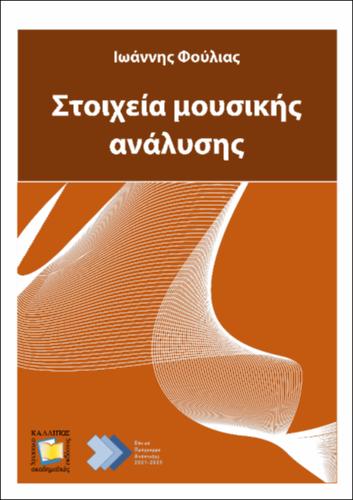| Title Details: | |
|
Elements of music analysis |
|
| Other Titles: |
Harmonic vocabulary, a glossary of musical terms, and guidance for writing papers |
| Authors: |
Fulias, Ioannis |
| Subject: | HUMANITIES AND ARTS > ARTS AND LETTERS > PERFORMING ARTS > MUSIC HUMANITIES AND ARTS > ARTS AND LETTERS > PERFORMING ARTS > MUSIC > INSTRUMENTAL MUSIC HUMANITIES AND ARTS > ARTS AND LETTERS > PERFORMING ARTS > MUSIC > MUSICOLOGY HUMANITIES AND ARTS > ARTS AND LETTERS > PERFORMING ARTS > MUSIC > MUSICOLOGY > ANALYSIS (MUSIC) HUMANITIES AND ARTS > ARTS AND LETTERS > PERFORMING ARTS > MUSIC > MUSICOLOGY > MUSICAL FORMS HUMANITIES AND ARTS > ARTS AND LETTERS > PERFORMING ARTS > MUSICAL STYLES HUMANITIES AND ARTS > ARTS AND LETTERS > PERFORMING ARTS > MUSICAL STYLES > CHAMBER MUSIC HUMANITIES AND ARTS > ARTS AND LETTERS > PERFORMING ARTS > MUSICAL STYLES > CLASSICAL MUSIC |
| Keywords: |
Tonal Music
Music Theory Form in Music Harmony Musical structure Musical terminology |
| Description: | |
| Abstract: |
This textbook fills a large gap in the Greek musicological literature that refers to the analysis of the repertoire of tonal music, and consists of three distinct parts. The first part is a thorough study of the harmonic vocabulary of tonal music, i.e. of the available types of chords and their notation under a view that, more or less, assimilates to the main relevant traditions cultivated in the field of music theory from the 18th up to the 20th century: the harmonic theory of scale-degrees along with thorough-bass figures, the functional harmony of Hugo Riemann but also the reductive harmonic thought of Heinrich Schenker. Furthermore, a holistic investigation on the degrees of relationship between all keys and harmonic regions used in the musical repertoire already from the late 16th century and, at least, up to the early 20th century is presented. The second part of the textbook has the form of a glossary, consisting of numerous entries in Greek and Latin alphabets, which refer to terms relevant to the tradition of tonal music, with emphasis on the established technical terminology for the harmonic and structural analysis, on comprehensive descriptions of music forms and genres, but also on terms that are obviously excessive, unsuitable or even incorrectly rendered in Greek. The entries are designed ή formed in such way so as to operate both independently and within a dense network of interdependent references. The third and last part is a brief guide for writing papers in the field of music analysis, with useful and specialised advice in writing and editing a text, as well as in stylisation and utilisation of the necessary bibliographical references.
|
| Linguistic Editors: |
Aggeletos, Theocharis |
| Type: |
Undergraduate textbook |
| Creation Date: | 20-09-2022 |
| Item Details: | |
| ISBN |
978-618-5667-24-5 |
| License: |
Attribution - NonCommercial - ShareAlike 4.0 International (CC BY-NC-SA 4.0) |
| DOI | http://dx.doi.org/10.57713/kallipos-76 |
| Handle | http://hdl.handle.net/11419/8564 |
| Bibliographic Reference: | Fulias, I. (2022). Elements of music analysis [Undergraduate textbook]. Kallipos, Open Academic Editions. https://dx.doi.org/10.57713/kallipos-76 |
| Language: |
Greek |
| Consists of: |
1. Triads 2. Seventh (and extended) chords 3. Secondary dominants 4. Secondary subdominants and extended tonicisations 5. Altered chords, nonharmonic tones and other types of chords 6. Degrees of relationship between harmonic regions or keys 7. Introductory remarks 8. Entries in Greek alphabet 9. Entries in latin alphabet 10. Advice in writing and editing scientific papers 11. Stylisation and utilisation of bibliographical references |
| Number of pages |
297 |
| Publication Origin: |
Kallipos, Open Academic Editions |
| You can also view | |
| User comments | |
There are no published comments available! | |

